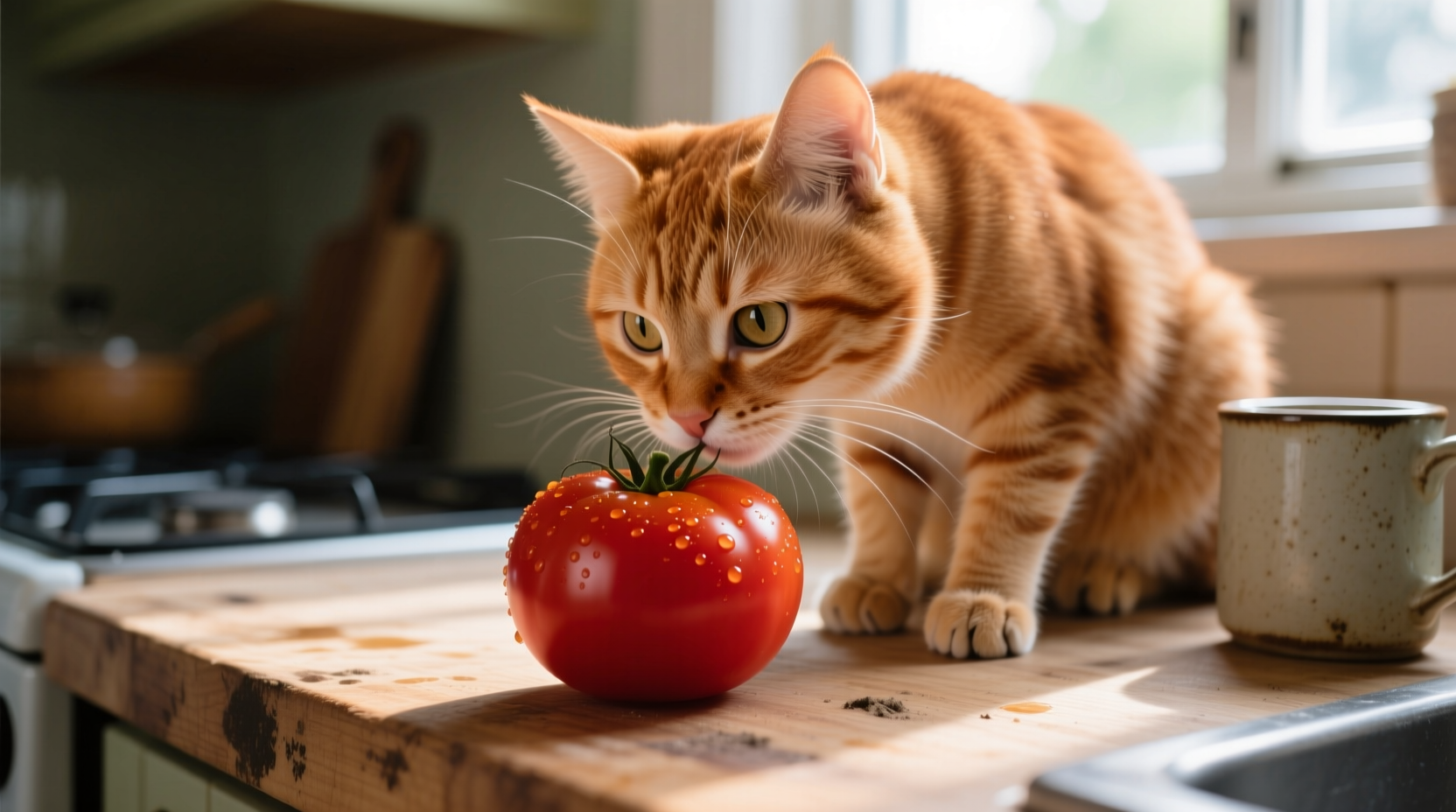Direct Answer: Cats can safely consume small amounts of ripe red tomato flesh as an occasional treat, but green tomatoes, stems, leaves, and unripe parts contain tomatine which is toxic to cats. If your cat eats any part of a tomato plant beyond a small amount of ripe flesh, contact your veterinarian immediately.
As a pet owner, discovering your cat nibbling on a tomato can trigger immediate concern. Understanding exactly which parts pose risks and what quantities are dangerous helps you respond appropriately without unnecessary panic. Let's examine the science behind tomato safety for cats with clear, actionable guidance.
Tomato Components: What's Safe and What's Not
Not all parts of the tomato plant carry the same risk level for cats. The key difference lies in the ripeness and plant component:
| Tomato Component | Tomatine Content | Cat Safety Level | Recommended Action |
|---|---|---|---|
| Ripe red tomato flesh | Very low | Generally safe in small amounts | Occasional treat (1-2 small pieces) |
| Green/unripe tomatoes | High | Unsafe | Avoid completely |
| Tomato leaves and stems | Very high | Dangerous | Keep cats away from plants |
| Tomato seeds and gel | Moderate | Potentially problematic | Remove before offering |
This comparison comes from the ASPCA Animal Poison Control Center, which monitors plant toxicity cases in pets nationwide. Their data shows that while ripe tomato flesh rarely causes issues, the green parts of the plant account for 92% of tomato-related toxicity cases reported to their center.
Understanding Tomatine Toxicity in Cats
Tomatine is a natural glycoalkaloid compound that acts as the plant's defense mechanism. Unlike humans who can process small amounts of tomatine without issue, cats have different metabolic pathways that make them more vulnerable.
According to research published in the American Journal of Veterinary Research, cats lack certain liver enzymes that help break down glycoalkaloids efficiently. This means even moderate exposure can potentially cause gastrointestinal and neurological symptoms.

Symptoms to Monitor After Tomato Exposure
If your cat has consumed any part of a tomato plant, watch for these symptoms which typically appear within 2-8 hours:
- Mild exposure: Drooling, mild stomach upset, decreased appetite
- Moderate exposure: Vomiting, diarrhea, lethargy, abdominal pain
- Severe exposure: Weakness, confusion, dilated pupils, irregular heartbeat
The Cornell Feline Health Center notes that severe symptoms are rare from ripe tomato consumption but more likely with green tomatoes or plant material. They emphasize that small kittens, senior cats, and cats with pre-existing health conditions face higher risks from the same exposure level.
Immediate Actions: What to Do If Your Cat Eats Tomato
Your response should match what your cat consumed:
- Ripe tomato flesh (small amount): Monitor for 24 hours for any digestive upset. Remove access to prevent further consumption.
- Green tomato or plant material: Contact your veterinarian immediately. Note the estimated amount consumed and time of exposure.
- Uncertain consumption: When in doubt, always consult your vet. Have the plant material available for identification if possible.
Never induce vomiting unless specifically instructed by a veterinary professional. The American Association of Feline Practitioners recommends keeping your vet's after-hours emergency number readily available for situations like this.
Safe Vegetable Alternatives for Cats
If you're looking to supplement your cat's diet with vegetables (which isn't necessary but some cats enjoy), consider these safer options:
- Cooked pumpkin: Excellent for digestive health (1-2 teaspoons)
- Steamed carrots: Softened and cut into tiny pieces
- Blueberries: Antioxidant-rich occasional treat
- Cucumber slices: Hydrating and low-calorie option
Always introduce new foods gradually and in very small quantities. The American College of Veterinary Nutrition emphasizes that vegetables should never exceed 5% of your cat's daily caloric intake, as cats are obligate carnivores requiring meat-based nutrition.
Preventing Future Tomato Incidents
Keep tomato plants out of reach by placing them in hanging planters or rooms your cat cannot access. When preparing tomatoes in the kitchen, keep your cat out of the area to prevent opportunistic nibbling. Store cut tomatoes in sealed containers rather than leaving them on countertops.
Remember that individual cats may have different sensitivities. While one cat might tolerate a small amount of ripe tomato without issue, another could experience digestive upset from the same quantity. Your cat's previous reactions should guide future decisions about offering tomato as an occasional treat.











 浙公网安备
33010002000092号
浙公网安备
33010002000092号 浙B2-20120091-4
浙B2-20120091-4